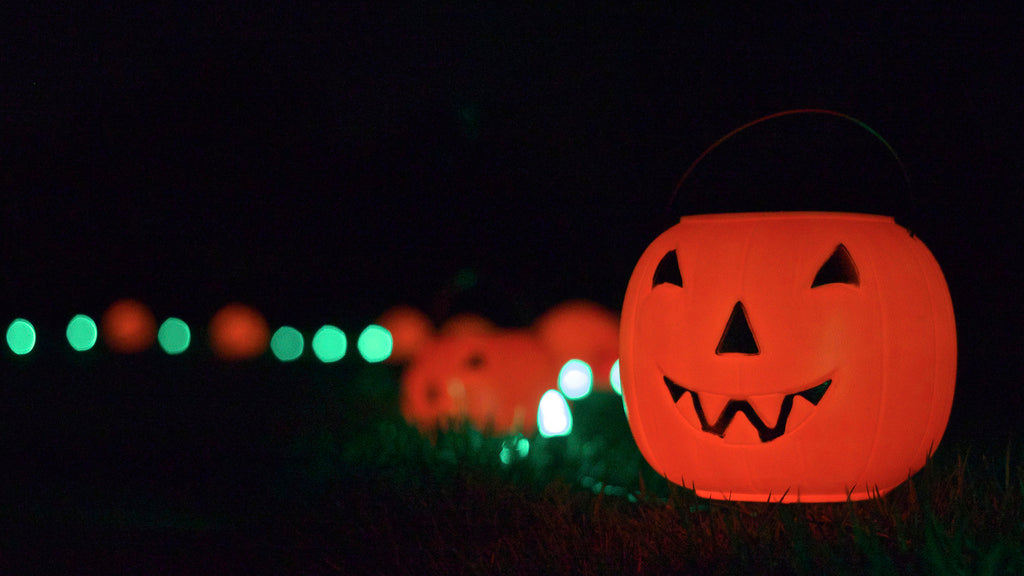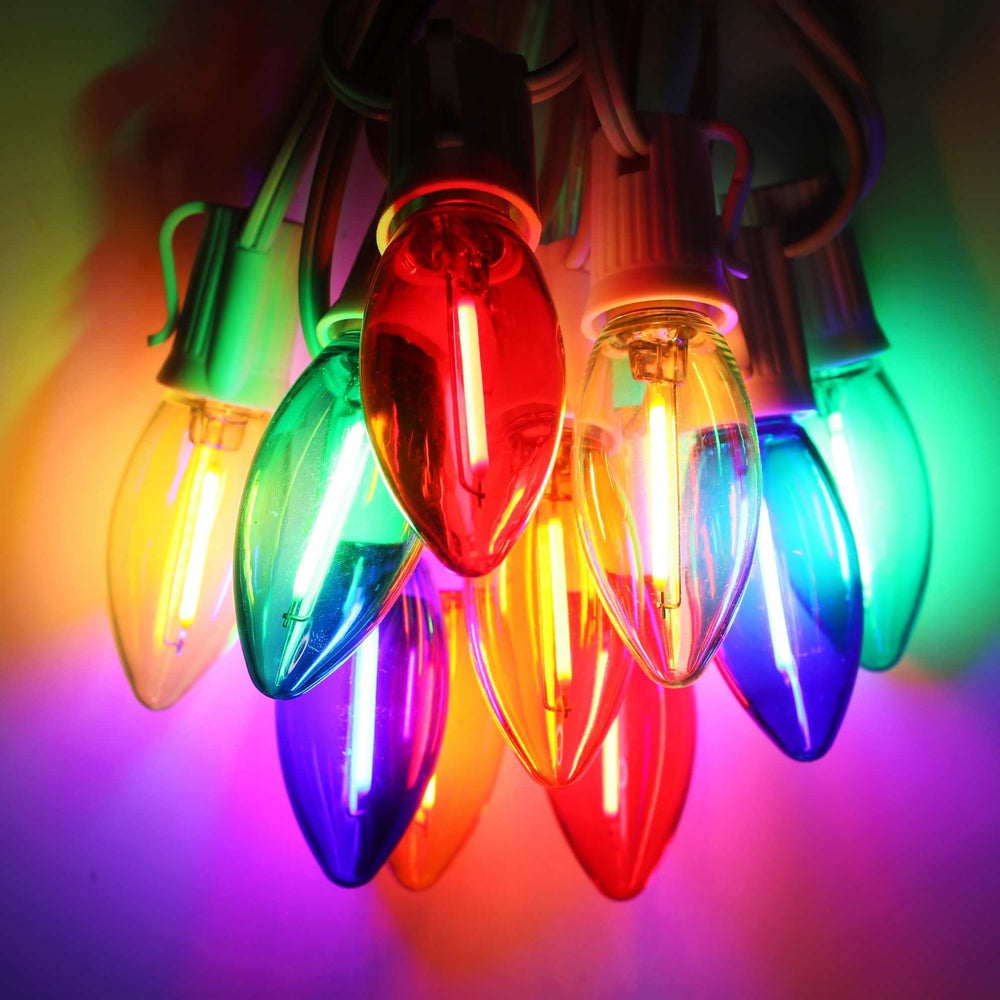

Who doesn't love Halloween – the candy, the flat witches-who-crashed-into-trees, the candy, the gaudy costumes, the candy? And even better, Halloween is our fastest-growing holiday, with nearly as much being spent on decorations as on Christmas, and more being spent on candy and sweets than on Easter.
Chances are good that you are planning to spook up your life with some Halloween gloom, or maybe even throw a party for little or big ghosts, goblins, and other assorted frights, complete with traditional purple and orange lights and enormous vats of candy. But why do we celebrate Halloween?
Halloween's Spooky History
Halloween falls at the time of year when trees are dropping leaves, plants are shedding their last blooms, and animals are preparing for long winters. In many cultures, this is the end of the year, while in others harvest feasts and celebrations are being prepared. Every culture that celebrates Halloween or a festival like Halloween believes that this is the time of year when the lines between life and death are blurred, and living spirits may walk the earth.
While many believe Halloween is a pagan holiday or something that mostly came from witches' Samhain, you'll find that everywhere in the Northern Hemisphere cultures have a holiday like Halloween; in China, for instance, Ghost Festival is celebrated (though much earlier than Halloween). In Mexico, El Dia De Los Muertes feels like a very creepy Halloween blended with Mardi Gras, its traditions coming as much from the Aztecs as from Christian culture. Ancient Egyptians and modern Pacific Islanders, Peruvians and Russians, all celebrate some form of this death-and-food festival. Go figure!
So harvest festival plus day when the dead rise up out of graves – it's easy to see, when you look at it this way, why you give candy to children dressed like skeletons. The Power Rangers and Strawberry Shortcakes are perhaps a bit more ambiguous.
Halloween Traditions – Or, Why Pumpkins and Masks?
Halloween Symbols
There are reasonable explanations for the mishmash of things we think of as Halloween symbols. Start with the costumes, one of the universal features of this festival from China to Paris, TX. Because the line between life and death is theoretically thin, the spirits of the dead can cross into the world of the living. It works the other way as well – weak living spirits can be enticed to the world of the dead. (insert spooky oohh ahh ahh here) Therefore, mothers dress their children in costumes of the dead so that the spirits will mistake them for fellow ghosts, ghoulies, and spirits, and will leave them alone.
These same costumes gave birth to trick-or-treat. Children, already cleverly disguised as spirits and cartoon characters, can force adults to give up treats lest the “spirit” play a trick on them. The spirits would have sought out treats, anyway; since Halloween is a harvest festival, tradition requires that the living share food with the dead, and this is a time when many cultures leave food at graves to appease or honor the spirits.
Not to belabor the food aspect, but consider that candy is a symbol of that harvest festival; we don't have a feast anymore, but candy is an easily-portable sign of plenty. Bats, cobwebs, the dark, and spiders are all associated with death and the grave, thus were easily adopted into the holiday. See how it is all coming together? :-)
Fire
And then there is fire. No other holiday is so closely related to fire, whether in bonfires or Jack-o-lanterns, candles or hearth fires. Traditionally, the fire in a house was kept burning at all times, throughout the year, because it was so time-consuming to light a new one. At the festival of the dead, however, fires were extinguished because it was believed spirits would enter the house in search of their warmth. Bonfires were often lit outside houses to draw the spirits there.
Today, you see the fires mostly in Jack-o-lanterns and the occasional bonfire. A new trend has people decorating with white, orange, and purple mini-lights and rope lights, and a few people are using black lights and glow-in-the-dark decorations to give their homes an extra creepy air. Why those colors? Orange is a traditional harvest color, referencing ripe vegetables and the color both of flames and of the turning leaves. Black is associated with the dark and death, and purple is an acceptable substitute for black when you're designing lighting that you actually want to see.
Halloween in America
Halloween has been celebrated in the United States for centuries, though its status today as the second most popular holiday is new. Even in Puritan New England, the more secular members of the community used this day to tell fortunes and feared the dead rising from their graves. The Pennsylvania Dutch, though they did not recognize Halloween as a holiday, took extra care to ward off evil spirits at this time of year. And starting in the 1700s, Halloween grew into a holiday when people engaged in frightening one another with stories and tricks, with its own literature (The Legend of Sleepy Hollow) and traditions like jack-o-lanterns and trick-or-treat.
Halloween as we know it today was born in the 1950s, when the baby boom resulted in lots of fun-seeking children at loose ends on the streets on that night. With a historical problem of vandalism on Halloween, communities everywhere institutionalized trick-or-treating, and children throughout America started going door to door in a playful ritualization of what had once been a problem. “Give me a treat or I'll pull a trick.”
Of course, there's no keeping grownups out of the fun. In the 1960s, adults were not willing to give up that free, celebratory feeling they had as kids begging for candy, and dress-up Halloween parties became an annual masquerade tradition. Today, adults have as much fun as children, if they celebrate the holiday right.
And in America, they generally do celebrate it right. The only holiday that sells more décor and lights is Christmas. Halloween decorations on houses are becoming commonplace, even expected. And most adults agree: Halloween is, in essence, a time to cut loose, to celebrate life and fun before the dark days of winter begin.








